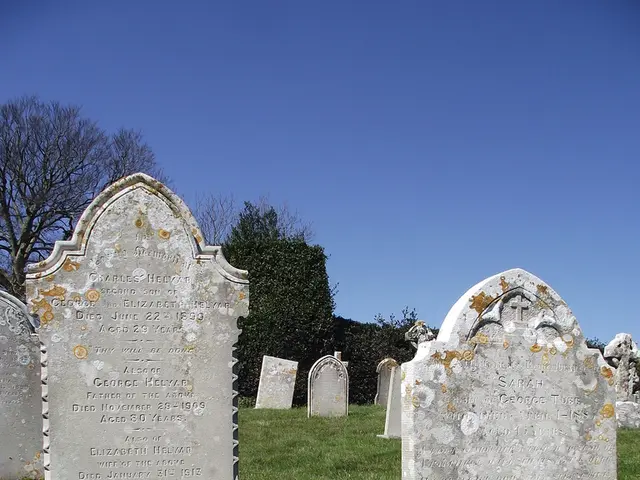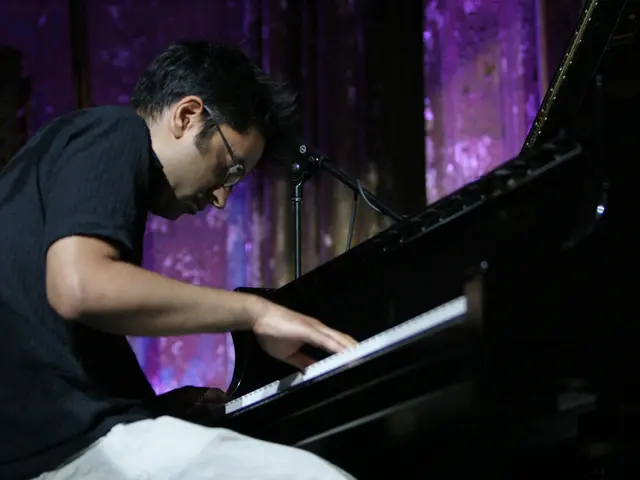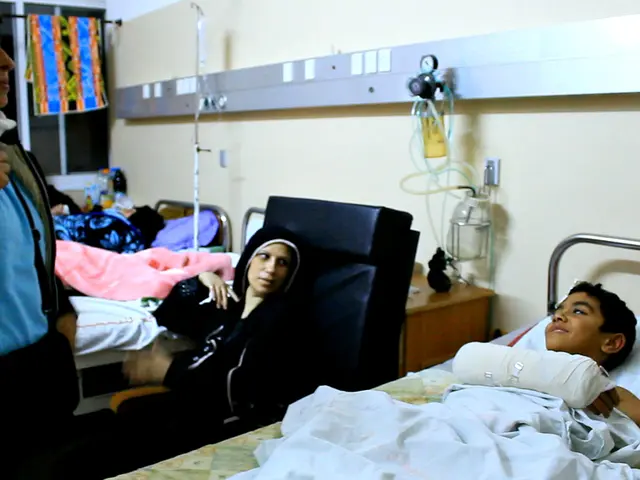Rare, non-surgical aortic valve replacement procedure successfully carried out by a medical team in Kuwait
Innovative Aortic Valve Replacement in a Kuwaiti Elderly Woman
A team of Kuwaiti medical professionals, led by Dr. Al-Tayeb Al-Qallaf, achieved an remarkable medical feat by performing a transcatheter aortic valve replacement (TAVR) on an elderly Kuwaiti woman without the need for open-heart surgery. The procedure was carried out at the Salman Al-Dabbous Cardiac Center.
Utilizing the BASILICA technique for TAVR—a method used to reduce the risk of coronary artery obstruction during high-risk TAVR procedures—the team managed to complete the complex surgery successfully. The combined use of BASILICA and other catheter-based interventions ensured a safer procedure for the patient, who had previously dealt with aortic valve replacement.
While the BASILICA method has revolutionized transcatheter aortic valve replacement and significantly reduced the risk of coronary obstruction, other techniques such as the UNICORN are less prominent in the medical literature.
The intricate operation lasted approximately nine hours and was accomplished without any complications. Dr. Al-Qallaf described the success as a significant milestone in cardiac care, particularly for patients requiring multiple interventions.
This groundbreaking TAVR showcases the rapid advancement of healthcare capabilities in Kuwait and the competence of national medical professionals in performing world-class procedures. The achievement underscores the importance of investing in national talent and fostering a collaborative medical environment.
The operation was executed by an integrated team under Dr. Al-Qallaf's supervision and included prominent cardiologists along with a dedicated nursing, anesthesia, intensive care, and cardiac unit staff.
By demonstrating Kuwait's expertise in complex cardiovascular treatments, this TAVR positions the nation as a regional leader in minimally invasive cardiac care.
What is BASILICA?
Definition and Mechanism
The Bioprosthetic Aortic Scallop Intentional Laceration to prevent Iatrogenic Coronary Artery obstruction (BASILICA) technique is a transcatheter procedure designed to reduce the risk of coronary artery obstruction during TAVR. This method involves the intentional splitting of the native or bioprosthetic aortic valve leaflet before deploying the new transcatheter valve.
Advantages of BASILICA
- Reduces Coronary Obstruction Risk: The primary benefit is the prevention of coronary artery obstruction, an often fatal complication during TAVR.
- Expands TAVR Indications: Allows TAVR in previously high-risk patients who could not undergo the procedure due to the risk of obstruction.
- Avoids Additional Stent Placement: Prevents the need for placing stents in coronary arteries, which can lead to complications such as restenosis and the requirement for prolonged dual antiplatelet therapy.
Applications
- Valve-in-Valve Procedures: Ideal for patients receiving a transcatheter valve within a pre-existing bioprosthetic valve.
- High-Risk Patients: Useful for elderly or comorbid patients for whom open surgery is not an option.
Medical Significance
The BASILICA technique has improved the safety and feasibility of TAVR, particularly for complex cases with a high risk of coronary obstruction. This advancement in cardiac interventions demonstrates the ongoing innovation in addressing rare but deadly complications.
The BASILICA technique, utilized in the successful transcatheter aortic valve replacement (TAVR) procedure performed on an elderly Kuwaiti woman, is a transcatheter procedure designed to reduce the risk of coronary artery obstruction during TAVR. This involves the intentional splitting of the native or bioprosthetic aortic valve leaflet before deploying the new transcatheter valve, which can prevent fatal complications and expand TAVR indications to previously high-risk patients, making it significant in the field of health and wellness, medical-conditions, therapies and treatments, especially for cardiovascular health.








